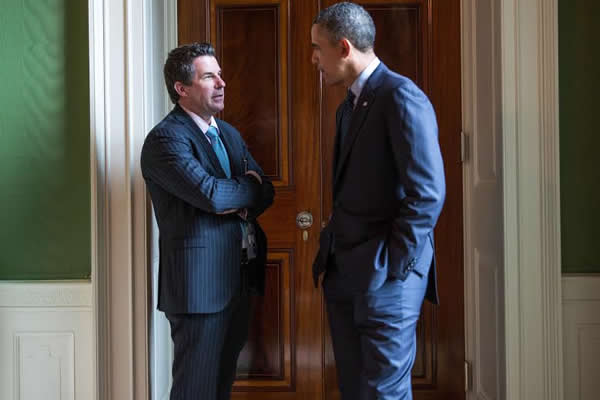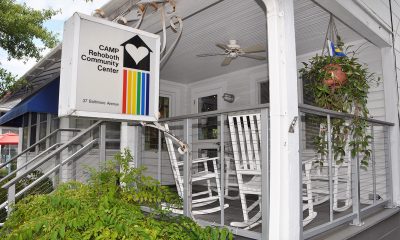a&e features
Newsom pardons LGBTQ and Black icon Rustin, stained by ‘historic homophobia’
‘Laws have been used as legal tools of oppression’
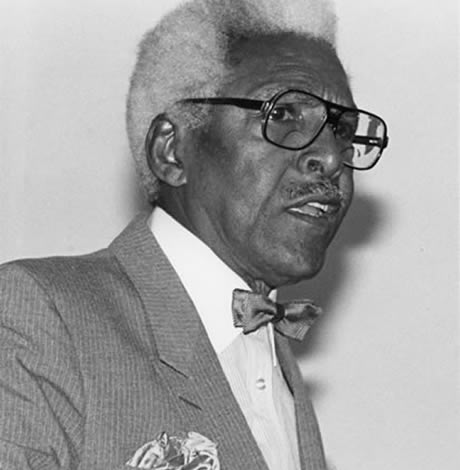
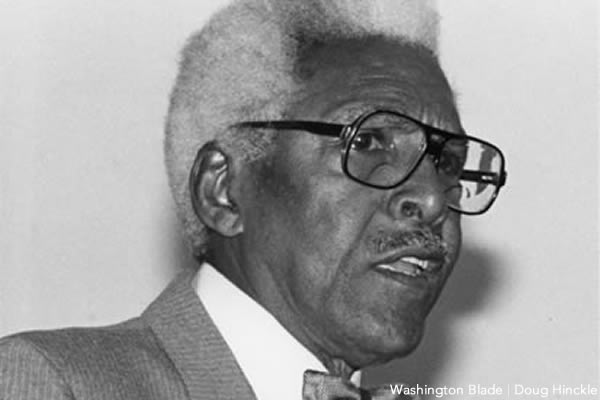
It was a patch of blue in the dark storm stalled over the divided states of America. On Feb. 5, California Gov. Gavin Newsom parted the pall and pardoned Bayard Rustin, mentor to Rev. Martin Luther King Jr. and chief organizer of the 1963 March on Washington. Though President Barack Obama posthumously awarded Rustin the Medal of Freedom in 2013, the gay civil rights icon still had the stain of a 1953 “morals charge” arrest in Pasadena on his lifetime of achievement.
“In California and across the country, many laws have been used as legal tools of oppression, and to stigmatize and punish LGBTQ people and communities and warn others what harm could await them for living authentically,” Newsom said in a statement. “I thank those who advocated for Bayard Rustin’s pardon, and I want to encourage others in similar situations to seek a pardon to right this egregious wrong.”

Excerpt of the pardon certificate
Rustin’s pardon launches a new clemency initiative for people who were prosecuted in California for being gay. In 1970, after the Stonewall riots and the movement for Gay Liberation, Assemblymember Willie Brown introduced the Consenting Adult Sex Bill to repeal the sodomy law and decriminalize gay sex. Five years later, with help from San Francisco Mayor George Moscone, the bill was finally passed and signed into law by Gov. Jerry Brown on May 12, 1975. But those convicted of engaging in consensual adult sexual conduct remained on the Sex Offender Registry until 1997, when a new law established a process enabling individuals to request removal. However, the original criminal conviction remained.
Newsom’s announcement acknowledges the systemic persecution of LGBTQ people and offers legal reparation.
“In California and across the country, charges like vagrancy, loitering, and sodomy have been used to unjustly target [LGBTQ] people. Law enforcement and prosecutors specifically targeted LGBTQ individuals, communities and community spaces for criminal prosecution. Now, as a proudly LGBTQ-allied state, California is turning the page on historic wrongs,” says the press release.
“There’s a cloud hanging over him because of this unfair, discriminatory conviction, a conviction that never should have happened, a conviction that happened only because he was a gay man,” state Sen. Scott Wiener, chair of California’s legislative LGBTQ caucus said Jan. 21 at a news conference with Assemblymember Shirley Weber, chair of the state’s Legislative Black Caucus, formally asking for a pardon.
“I’m thrilled that Governor Newsom is pardoning Bayard Rustin and that he acted so quickly and decisively in response to our request. I also applaud the Governor for broadening this work to provide other criminalized LGBT people with a path to clear their records of wrongful convictions on homophobic charges. These actions are consistent with the Governor’s deep and longstanding support for the LGBT community,” Wiener said in a statement. “Generations of LGBT people – including countless gay men – were branded criminals and sex offenders simply because they had consensual sex. This was often life-ruining, and many languished on the sex offender registry for decades. The Governor’s actions today are a huge step forward in our community’s ongoing quest for full acceptance and justice.”
“On behalf of the Black Caucus, I want to thank the Governor for granting this posthumous pardon. The Arc of Justice is long, but it took nearly 70 years for Bayard Rustin to have his legacy in the Civil Rights movement uncompromised by this incident. Rustin was a great American who was both gay and black at a time when the sheer fact of being either or both could land you in jail,” said Weber. “This pardon assures his place in history and the Governor’s ongoing commitment to addressing similar convictions shows that California is finally addressing a great injustice.”
“Civil rights champion Dr. Martin Luther King, Jr. said, ‘The time is always right to do what is right.’ For our friend Governor Newsom, that time is today. We are grateful to the governor for demonstrating our California values by pardoning civil rights hero, Bayard Rustin — a trusted aide to Dr. King — and for creating a system for other LGBTQ+ people to seek pardon from unjust convictions, said Equality California Executive Director Rick Zbur. “Today, Governor Newsom, and indeed the entire Golden State, did the right thing.”
That the pardon comes at the beginning of Black History Month is notable. On the 50th anniversary of the 1963 March on Washington, Professor Henry Louis Gates Jr. wrote on The Root: “I ask that if you teach your children one new name from the heroes of black history, please let it be Bayard Rustin.”
“For decades, this great leader, often at Dr. King’s side, was denied his rightful place in history because he was openly gay,” said President Obama, presenting Rustin’s medal to his longtime partner, Walter Naegle on Aug. 8, 2013. “No medal can change that, but today, we honor Bayard Rustin’s memory by taking our place in his march towards true equality, no matter who we are or who we love.”
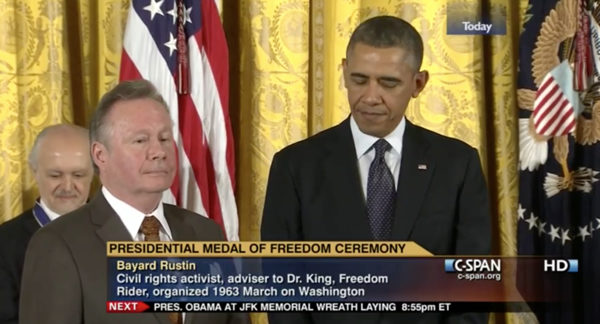
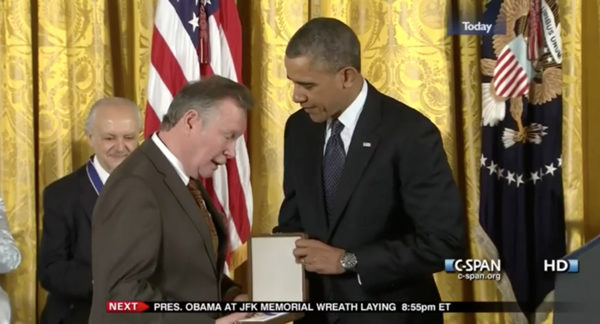
Born in 1912, Rustin learned about racism early on learned from his a Quaker grandmother in his West Chester, Pennsylvania hometown. She was also a member of the NAACP and intellectual civil rights leaders such as W.E.B. Du Bois and James Weldon Johnson were house guests.
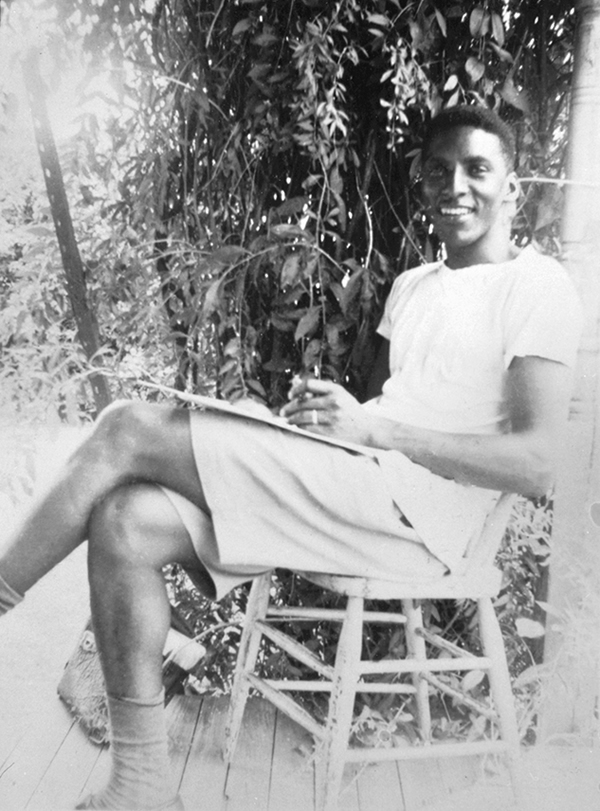
In high school, Rustin challenged the racially discriminatory Jim Crow laws by defying the rules to sit in the segregated balcony of a movie theater — for which he was arrested, as he recalled in the documentary Brother Outsider: The Life of Bayard Rustin.
“I once went into the little restaurant next to the Warner Theatre, and—can you believe it?—there was absolute consternation. That was the first occasion in which I knew West Chester had three police cars. They surrounded the place as if we were going to destroy motherhood. I purposely got arrested, and then I made an appeal that all the black people and white people who were decent-minded should give 10 cents to get me out of jail. And I got out, because they took up a collection.”
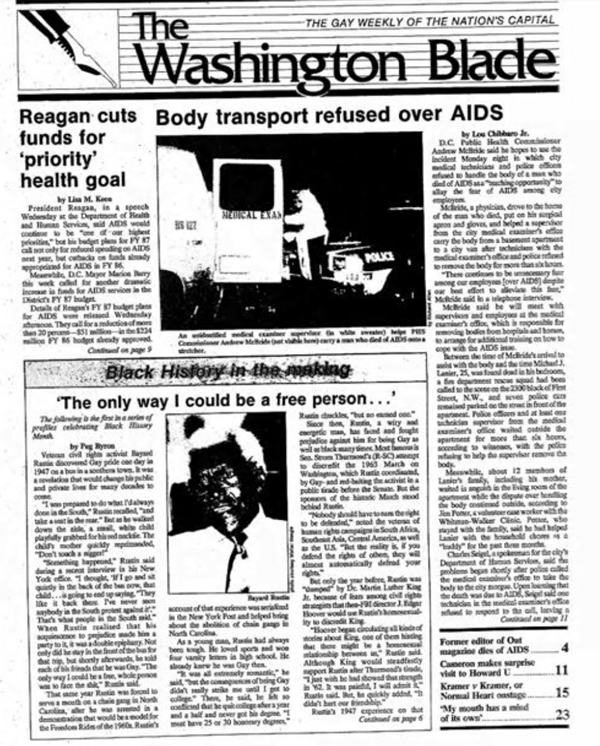
Rustin knew he was gay in high school, he told Washington Blade reporter Peg Byron on Feb. 5, 1986. But he remained closeted until 1947 after an encounter with a child on a bus trip in the South:
“One of the reasons that I decided that I should no longer remain in the closet came from an experience I had as a black. One day, in 19…, way back as far as 1947, I walked into a bus in the South, all prepared to do what I had always done in the South. Take a seat in the rear.
As I was going by the second seat to go to the rear, a white child reached out for the red necktie I was wearing and pulled it. Whereupon its mother said, “Don’t touch a nigger.”
Something happened, and I said to myself, If I go and sit quietly in the back of that bus now, that child who was so innocent of race relations that it was going to play with me, will have seen so many blacks go in the back and sit down quietly that it’s going to end up saying, “They like it back there, I’ve never seen anybody protest against it.” That’s what people in the South would say.
So I said, I owe it to that child, not only to my own dignity, but I owe it to that child that it should be educated to know that blacks do not want to sit in the back, and therefore I should get arrested letting all these white people in the bus know that I do not accept that.
Now, it occurred to me shortly after that that it was an absolute necessity for me to declare homosexuality, because if I didn’t I was a part of the prejudice. I was aiding and abetting…
Peggy Byron: Sitting in the back, yeah…
BR: … the prejudice that was a part of the effort to destroy me. And that in the long run the only way I could be a free whole person was to face the shit.
But from my own experience I know how long it can take till you free yourself. Thirty-four years is a long time to free yourself.”

During those closeted years, he organized strikes in college, advocated to free the Scottsboro Boys, in 1936 joined the Young Communist League which fought segregation but left disillusioned when they dropped fighting Jim Crow to fight to get the US into World War II. Rustin then found two other pacifists – A. Philip Randolph, the head of the Brotherhood of Sleeping Car Porters and A. J. Muste, leader of the Fellowship of Reconciliation (FOR), who both became mentors.
By now Rustin was on FBI Director J. Edgar Hoover’s radar. Muste hired him to handle race relations. In 1941, the three pacifist socialists proposed a march on Washinton to protest segregation in the military and employment. After a meeting with President Roosevelt in the White House, FDR issued Executive Order 8802 (the Fair Employment Act) banning discrimination in defense industries and federal agencies. As an act of good faith in response, Randolph cancelled the march over Rustin’s objections. The military was finally desegregated in 1948 by President Truman, meaning black Americans fought racism and the Nazis and fascism, only to come home to Jim Crow.
Meanwhile, Rustin came to California to try to help Japanese Americans who were losing their property and their rights as the federal government imprisoned them in internment camps. He also foreshadowed the Freedom Rides by trying to desegregate interstate bus travel in 1942, for which he was arrested outside Nashville, beaten but never charged.
By 1948, the year after he came out, Rustin was well-known enough to be invited to India for an international pacifist conference.
“Mahatma Gandhi had been assassinated earlier that year, but his teachings touched Rustin in profound ways. ‘We need in every community a group of angelic troublemakers,’ he wrote after returning to the States. ‘The only weapon we have is our bodies, and we need to tuck them in places so wheels don’t turn,’” Prof. Gates writes.
The incident for which Rustin was pardoned happened in 1953. By now a respected organizer, Rustin traveled around the country giving speeches. After a speech one January night in Pasadena, police officers found him having sex with two white men in a parked car. Rustin was arrested, sentenced to jail for 60 days and was forced to register as a sex offender for the “morals charge.”
The arrest severely damaged his career in a country terrified by McCarthyism. He was forced to cancel speaking engagements and resigned from his leadership position with Muste’s Fellowship for Reconciliation.
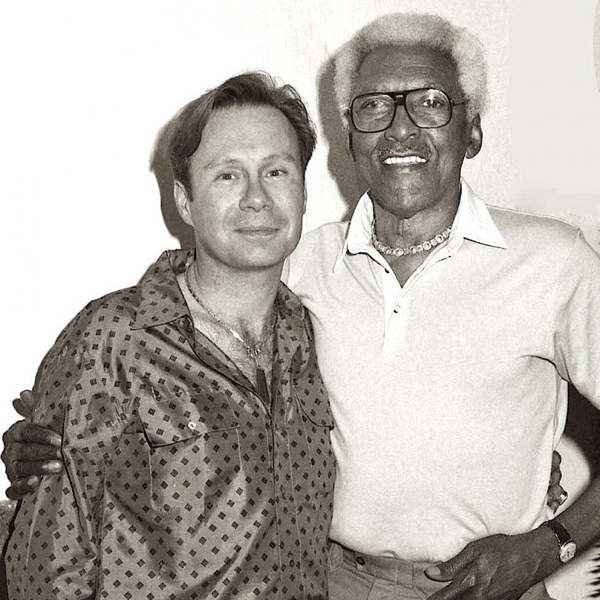
He struggled to find work, resorting to manual labor as a furniture mover, Naegle said later.
“I know now that for me sex must be sublimated if I am to live with myself and in this world longer,” he wrote in a March 1953 letter.
In 1955, Rustin secretly wrote “Speak Truth to Power: A Quaker Search for an Alternative to Violence.“In 1956, he found his way back into the civil rights movement, traveling to Alabama to advise Rev. Martin Luther King Jr. on how to organize his Montgomery Bus Boycott using Gandhi’s principles of non-violence. The two were introduced by Rustin’s friend Coretta Scott.
“King really had a very, very limited idea about nonviolence,” Julian Bond, who helped found the Student Nonviolent Coordinating Committee, told Democracy Now’s Amy Goodman. “It is Bayard Rustin who really tutored him, who said, ‘This is what you have to do.’ Rustin was horrified to see these pistols in King’s home, you know, and these armed guards around King’s home, because it just went against everything he believed in about nonviolence. If it hadn’t been for Bayard Rustin, Dr. King wouldn’t have had any understanding, I don’t think, of nonviolence. And Rustin tutored him and made him into the person we know he became.”
But that arrest record and the “open secret” of his homosexuality haunted him. Rustin was forced to resign from the Southern Christian Leadership Conference he co-founded after the powerful New York Rep. Adam Clayton Powell Jr. threatened to tell the press that he and King were lovers.
Gay historian, John D’Emilio author of “Lost Prophet: The Life and Times of Bayard Rustin,” told Amy Goodman:
“Bayard himself was very aware that given social attitudes towards homosexuality and gay men and lesbians, he couldn’t wear it on his sleeve. He couldn’t, you know, be out there with the rainbow flag. This was before gay liberation. So Bayard himself was perfectly happy to keep this in the background and to move out of the way, if that was going to be good for the movement.
What made him unhappy and what made him feel like he had been done wrong was when people disavowed him. And there was a point, in 1960, when Rustin and Mr. Randolph and Dr. King were part of organizing major demonstrations at the presidential conventions, Republicans and Democrats, and at that point Representative Adam Clayton Powell from Harlem didn’t like the fact that these radicals, someone like Bayard Rustin, was getting so much attention and moving into his sphere in the Democratic Party.
And he put out the word to Dr. King that if you don’t distance yourself from Bayard Rustin, I am going to claim that there is something going on between the two of you. And that scared Dr. King, and Bayard made the decision to resign from his position. But he also expected at that point that he would be defended. And when he wasn’t defended, it was—it was painful. It was very painful. And he spent a couple of years, mostly—in the early ’60s, mostly involved in the peace movement rather than in the civil rights movement because of that rupture. And it’s the March on Washington that brought him back into the center of things.”
“That was around 1962,” Rustin told the Washington Blade via the special Making Gay History podcast. “And, naturally, I took the position that if people feel that I am a danger to some important movement, I would leave. But the thing which distressed me was that if… if Martin had taken the strong stand then that he took a year later, in ’63, vis-à-vis Strom Thurmond, he could have overcome it and kept me. But I understand his doing it, and I hold no grief with him about having done it. I just wish that he had shown the strength in ’62 that he showed when he backed me completely in ’63. But he was a year older and had another year’s experience.”
A. Philip Randolph brought Rustin back into the fold to organize the 1963 March on Washington for Jobs and Freedom but NAACP’s Roy Wilkins saw Rustin as a liability and forced him to take a deputy position.
But then FBI Director J. Edger Hoover slipped Rustin’s arrest record to rabidly anti-gay South Carolina Sen. Strom Thurmond – who had secretly fathered a child with his African-America maid. Three weeks before the march, Thurmond went public, trying to destroy the unprecedented event by denouncing Rustin as a gay communist and placing his arrest record in the congressional record.
Rustin told the Washington Blade:
“Now this became very clear to me in 1963, when I was organizing the March on Washington. And Strom Thurmond stood up in the Senate of the United States and for three-quarters of an hour, attacked me as a draft dodger, which was untrue, because I was a conscientious objector and well known as being a Quaker opposed to all violence. He attacked me as a former member of the Young Communist League, which was true. I had been. He attacked me as a homosexual. Which of course I was.
PB: You were the original commie-pinko-fag of the day, I suppose.”
BR: Yeah, exactly. Now, there were 10 leaders of that march. One of the most important Jews, the most important Catholic, the most important Protestant, Walter Reuther representing the trade union movement, and six black civil rights leaders.
When he attacked me, I had absolutely no basic apprehension and for a very good reason, because I had spent a great deal of my life defending prejudice against Catholics, against trade unions, against Jews, against blacks, against Protestants, and therefore I inwardly knew that those leaders, knowing of my history, had to come to my defense. And they did. And the important thing was that they voted that only one person should speak, and that was the founder of the march, Mr. A. Philip Randolph.”
For what spans five pages in the Congressional Record, Thurmond not only submitted the arrest record but the news articles about the arrest and conviction.
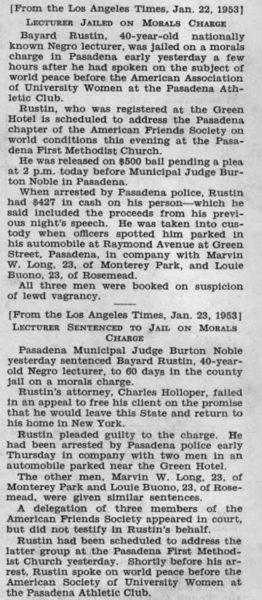
“The article states that he was convicted in 1953 in Pasadena, California, of a morals charge. The words ‘morals charge’ are true. But this is a clear-cut case of toning down the charge. The conviction was sex perversion,” says Thurmond.
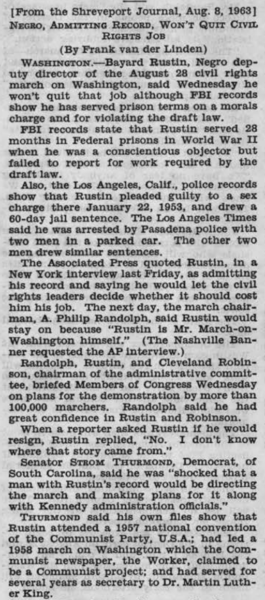
“The senator is not interested in me if I were a murderer, a thief, a liar or a pervert. The senator is interested in attacking me because he is interested in destroying the movement. He will not get away with this,” Rustin said.
King and the other Big Six backed Rustin up this time because the attacks came from one of the worst Southern white supremacists. But after the march, Rustin was quietly denied his role as the seventh in the Bix Six group of civil rights leaders who called for the march: A. Philip Randolph, Roy Wilkins, Rev. Dr. Martin Luther King Jr., John Lewis, Jim Farmer, Whitney Young when the chief organizer of the march was disinvited to the White House to celebrate with President John F. Kennedy.
And yet, according to an extensive CNN report commemorating the 50th anniversary of the march, it was Rustin who saved the march for the organizers – from a Kennedy take over.
“The Kennedys were almost morbidly afraid of this march. They understood there’d been nothing like it,” Rep. Eleanor Holmes Norton, D-District of Columbia, who helped plan the march, told CNN.
“The Kennedy administration was afraid that if there was violence on the march, it would mean that the Civil Rights Act, which John F. Kennedy had just introduced, would never get passed,” said march planner Rachelle Horowitz. “When we first began planning the march, there was a concerted effort by the Kennedy administration to get it called off and to not let it take place.”
“They kept a watchful eye on the planning of the march,” said John Lewis, the 23-year-old elected to lead the Student Nonviolent Coordinating Committee. “They stayed in touch with the (march) leadership,” which had been broadened to include four white leaders, representatives of the Protestant, Jewish and Catholic faiths, and civil rights advocate and United Auto Workers president Walter Reuther.
Reuther was recruited by the White House “to infiltrate the march and steer it away from radical rhetoric and direct action,” wrote Charles Euchner in his book “Nobody Turn Me Around,” about the historic march. “And so he did.”
Though JFK had come around to the idea of the march, Attorney General Robert F. Kennedy’s office inside the Justice Department’s room 5110 “was the command center,” Jack Rosenthal, who was the department’s assistant press officer at the time, told CNN.
“There was a proposal on the table that Kennedy speak to the March on Washington,” march planner Courtland Cox told CNN. “And Bayard knew this would have been a disaster because it would’ve been taken over by (Kennedy) just because he’s president. It would’ve been Kennedy’s march.”
From CNN:
“So, Cox said Rustin and he excused themselves from that particular meeting and took a walk to the bathroom. Clearly flummoxed about the problem, Rustin took a sip from his back-pocket flask and came up with an idea on the fly.
“And Bayard got back into the meeting and he literally made this up,” Cox recalled. “He said that he heard … if the president spoke the Negroes were going to stone him.”
After that, the idea of Kennedy speaking at the march was never considered.”
None of the feared outbreaks of violence occurred.
“After the March on Washington was over, President Kennedy had invited us back down to the White House,” Lewis said. “He stood in the door of the Oval Office and he greeted each one of us. He was like a beaming, proud father. He was so pleased. So happy that everything had gone so well.”
Kennedy told King: “And you had a dream,” added Lewis.
Rustin’s role was overshadowed – as were his remarks at the march that August 28, 1963:
“We demand that segregation be ended in every school district in the year 1963! We demand that we have effective civil rights legislation—no compromise, no filibuster—and that include public accommodations, decent housing, integrated education, FEPC and the right to vote. What do you say? We demand the withholding of federal funds from all programs in which discrimination exists. What do you say?”
Rustin died of a perforated appendix on August 24, 1987, survived by Walter Naegle, his partner of 10 years.
One last thing, Julian Bond told Amy Goodman:
“I could not think of anybody else who at the time would have stepped forward, taken hold of this March on Washington, pull together all these hundreds of thousands of peoples, the buses, the trains. You know, I saw something just recently: They made 800,000 sandwiches. Imagine that. And it was all done at Bayard Rustin’s desire.
One thing I think we’re not hearing about Bayard Rustin is his sense of humor. He once said that Dr. King couldn’t bring vampires to a bloodbath. That was the kind of organizer Dr. King was not. But Bayard Rustin knew he was an organizer and was just wonderful at getting people to do things that they didn’t think they could do or didn’t know they wanted to do. He was just a great, great person….
I think those of us who were there in 1963 didn’t immediately realize how significant this was. As you said during the program, we didn’t see many people there early in the morning. The crowd grew and grew and grew. But even when they were all there, you had no idea how many there were. You know, you can’t look out at this mass of people and say, “This is 250,000 people.” You just have no idea who they are. And I think, for me, driving back to Atlanta later that day and then reading newspapers the next day in Atlanta and hearing what other people had to say about it, only then would we began to understand the significance of this thing—the largest gathering ever at a civil rights protest.
People came together to demand civil rights in America, and that was tremendously significant. But, as you say, if you compare these demands that Bayard read at the march with where we are today, you can see that clearly most of these things have not been achieved, and we still have a long, long way to go.”
While Rustin didn’t attend the White House meeting, he and A. Philip Randolph did make the cover of LIFE magazine.
“Rustin was one of the most important social justice activists in the U.S. in the 20th century,” says historian John D’Emilio.
That 1953 arrest record hung like an invisible chain around Rustin’s neck. Now he is really, finally free.
If you think you are eligible and would like to seek clemency, you can apply for a pardon and receive updates and information on the clemency initiative at www.gov.ca.gov/clemency
a&e features
Have yourself a merry John Waters Christmas
Annual holiday show returns to Alexandria and Baltimore
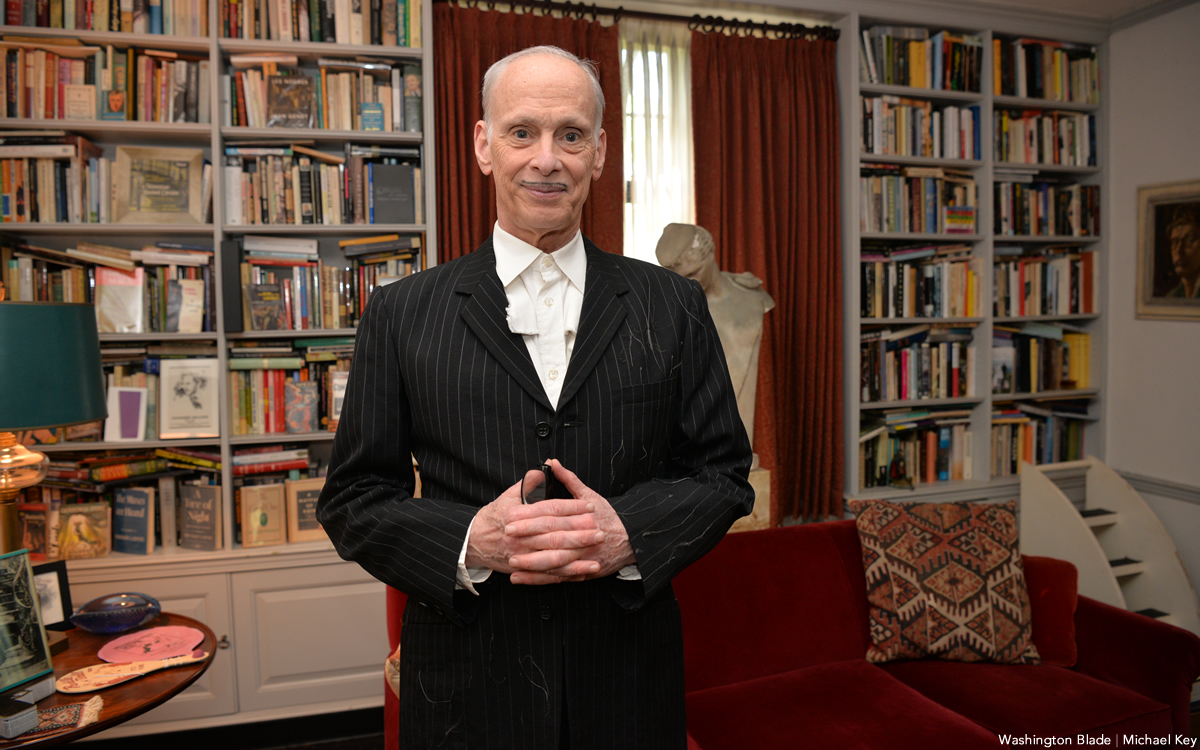
When it comes to iconic Christmas scenes in movies, none can top the tree-toppling tantrum thrown by cha-cha heels-deprived Dawn Davenport in John Waters’s fifth full-length feature “Female Trouble” from 1974. Therefore, it’s not surprising that Waters continues to make art out of Christmas, performing his spoken word Christmas tour in cities across the country. Waters has even more reason to celebrate with the release of his new red vinyl 7” single, a cover of Little Cindy’s “Happy Birthday Jesus (A Child’s Prayer)” on the A-side, and “A Pig Latin Visit From St. Nicholas” on the B-side. If you’re still looking for unique Christmas gifts, consider this record. As always, John was kind enough to make time for an interview in advance of his tour dates.
BLADE: John, in preparation for this interview with you, I went back and listened to Little Cindy’s original rendition of “Happy Birthday Jesus (A Child’s Prayer)” on your “A John Waters Christmas” CD.
JOHN WATERS: One thing I did, if you notice, I make the same stumble in my recording that she did in the original.
BLADE: It sounded to me like she got choked up.
WATERS: No, I think she just stumbles over a word, so I stumbled over the same word. It’s appropriation, insanely.
BLADE: Is this a song you first became aware of in your youth or when you were an adult?
WATERS: When I was doing the Christmas album, I had this friend named Larry Benicewicz. He was kind of my idea man with music. He knew every single old record. I would say to him, “Weird Christmas songs,” when we were doing a soundtrack, or a song about bears, or a song about this, and he would give me all these tapes. It was one of the ones he played for me. A lot of the songs I put in my movies and on my records, I did know as a kid. I did not know this one, but I immediately embraced it. I don’t think it’s campy. I think it really is spiritual in a weird way. My doing it makes it a novelty record. I am really for novelty records, and there aren’t any anymore. Why was there not a COVID novelty record? That’s insane. The dance “The Bug” that’s on the “Hairspray” soundtrack would be perfect for COVID.
BLADE: The thing that struck me was that for a Christmas song in the voice of a child, a kind of death pall hangs over it, with lines like, “If I was good you’d let me live with you” and “they nailed you to the cross, they wanted you to die.”
WATERS: All of it! When I see children at midnight mass kneeling in front of a nude man nailed to a cross, I feel like I’m at The Eagle! It is S&M, it’s creepy. I took the same cover (photo) from her record to parody and put my face on it. The same thing I did with The Singing Dogs last year when I covered (their version of) “Jingle Bells.” I’m really into novelty records. I love them and I’m trying to bring them back. I don’t expect anybody to ever play these records. Even The Singing Dogs one said on it, “Please do not play this record” [laughs]. And the flipside, the Pig Latin version, is almost impossible to listen to.
BLADE: I’m so glad you mentioned that. “A Pig Latin Visit From St. Nicholas” reminded me of the lost art of speaking in Pig Latin. I also recall watching the PBS series “Zoom” as an adolescent and learning to speak “ubbi dubbi,” a distant relative of Pig Latin. Do you think that the time is right for a Pig Latin or ubbi dubbi revival?
WATERS: Here’s the thing, I never could pick up any language, except Pig Latin. I’ve been in every foreign country. Foreign countries have given me money to learn to speak the language. I can never do it! But Pig Latin…my parents and other parents in the ‘50s spoke Pig Latin so kids couldn’t understand what they were saying. Then my mother taught it to me, and I used it. The hardest take to shoot in “Pink Flamingos” was not eating the dog shit. It was when the cast skipped, in one take, saying “E-way, are-yay e-they ilthiest-fay eople-pay in-hay e-they ole-hay ide-way orld-way.” We’re the filthiest people in the whole wide world in Pig Latin. We had to do so many takes so they could do it once without screwing it up. In “Polyester,” Edith (Massey) answers the phone, “ello-hay.” I did a photo piece where it was all subtitled in Pig Latin. Like “osebud-Ray” (from “Citizen Kane”) or in “Streetcar,” “ella-Stay!” [Laughs] All the iconic dialogue translated into Pig Latin. My assistant who helped me do it, had never heard of Pig Latin. She really got good at it because she lived in many foreign countries and can pick up languages. But it’s not that easy to do it correctly and read it. Your computer will translate into Pig Latin.
BLADE: AI understands Pig Latin?
WATERS: I guess that’s AI. It wasn’t 100% right, but it was close. I can speak it if I look at it, but just do a bit at a time. It was a challenge that no one would possibly care about or want to do.
BLADE: I think you pulled it off very well.
WATERS: If you want people to leave on Christmas morning, you put it on. That’s how you get your guests to leave. It’s time to go.
BLADE: Ood-gay i-bay! How did your relationship with record label Sub Pop, which released 2021, 2022, 2024, and new 2025 holiday singles, come about?
WATERS: I believe the first thing I did for them was “Prayer to Pasolini.” They came to me through Ian Brennan. He’s won a couple Grammys for World Music, but he is also is one of my agents who does the Christmas tour and a lot of my shows, anything with music. He helped me arrange each one of the songs. He had a relationship with Sub Pop. It was perfect. My friends in Baltimore, (the band) Beach House, have had huge success.
BLADE: That’s right, they’re on Sub Pop!
WATERS: Yes! I’m happy to be on it. I’ve even been to the warehouse and posed for pictures like Jackie Suzanne used to do.
BLADE: Is there any chance that “A John Waters Christmas” might be reissued on vinyl by Sub Pop?
WATERS: No. It’s such a nightmare to get the rights and to renew them. You have to find the publisher and the writer, and they usually hate each other. It doesn’t matter if it’s obscure or famous, it’s hard to get. You have to make the deal. The singer doesn’t get anything unless they play it on the radio. It would be so complicated legally, and there would be such a [laughs] tiny audience for it. I hope it will come out again. The same thing with the one for Valentine’s Day. I had two of them that did quite well when they came out; “A Date With John Waters and “A John Waters Christmas.” The “John Waters Christmas” album is still the soundtrack that plays whenever I’m doing my spoken word Christmas show as people are entering the theater.
BLADE: Aside from your annual Christmas show tour, what else do you do for the holidays now, and are there any traditions that you’ve carried over from your family?
WATERS: Certainly! I have two sisters, my brother’s widow, and me, so there are four and we take turns each year to have the Christmas dinner. Mine was last year. An entire sit-down dinner. Mom’s China, the silverware, the entire full dinner. It’s pretty traditional. I don’t have a Christmas tree, but I do decorate the electric chair from “Female Trouble.” That is a tradition in my family. We do have Christmas decorations, but they’re usually weird ones that fans sent me. I have one with Divine knocking over the Christmas tree, and the Christmas tree lights up, all sorts of amazing things. There is definitely a tradition here that might be a little altered, but it is definitely a tradition. I used to have a giant party every year, but COVID ended that. I still wouldn’t want 200 people in my house breathing right now.
BLADE: I was looking at your tour schedule and wondered if there are any new cities in which you’ve never performed the John Waters Christmas show that have been added to this year’s schedule?
WATERS: I don’t think there’s a city in America in which I haven’t done one show! The only places I haven’t been to are Hawaii and Alaska. I could do it there, but it’s too long on a tour. I can’t think of a city I haven’t played in in America over the last 50 years. The Christmas show is completely different every year. It doesn’t matter if you saw it last year.

Some gifts scream practical, others whisper luxury, and a few flat-out blur the lines. From cocoa that feels ceremonial to a cologne that linger like a suggestive smirk, this year’s ultimate gift picks prove that thoughtful (and occasionally naughty) presents don’t have to be prosaic. Welcome to your holiday cheat sheet for festive tangibles that get noticed, remembered, and maybe even result in a peck of gratitude planted under the mistletoe. Consensually, of course.
Amber Glass Champagne Flutes
Pop the champs – but make it vintage. These tulip-shaped stunners in amber-tinted glass bring all the Gatsby vibes without the Jazz-age drama. Whether you’re toasting a milestone or celebrating a Tuesday, their seven-ounce capacities and hand-wash-only care make ‘em as practical as they are pretty. Pair with a thoughtful bottle of bubs and gift with a glittering wink. $18, NantucketLooms.com
Disaster Playbook by Here Comes the Apocalypse
Because the end of the world shouldn’t be a solo act, this spiral-bound guide is your step-by-step roadmap to surviving and thriving when everything else goes sideways, which might be sooner than you think. Packed with checklists, drills, and a healthy dose of humor, it’s like a survival manual written by your most prepared (and slightly snarky) friend. Whether you’re prepping for a zombie apocalypse or, more realistically, REVOLUTION!, this playbook’s got your back. $40, HereComesTheApocalypse.com
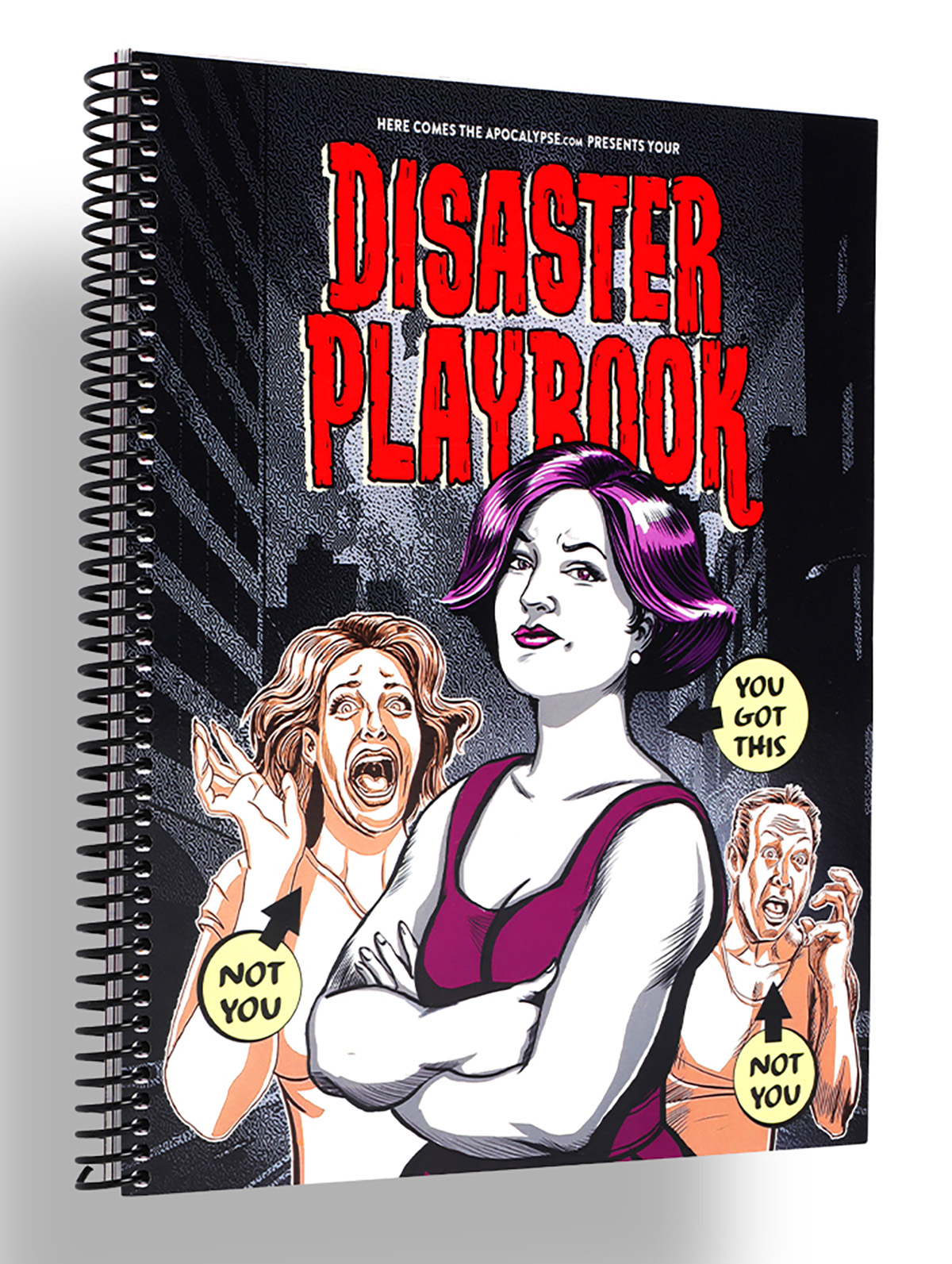
Wickless Vulva Candles
Bold, luxurious, and completely flame-free, CTOAN’s wickless candles melt from beneath on a warmer, releasing subtle, sophisticated fragrances, like sandalwood or lavender. The vulva-shaped wax adds a playful, provocative element to any space –perfect for a bedroom, living room, or anywhere you want elegance with an edge. A gift that celebrates form, intimacy and self-expression, no fire required. $39, CTOANCO.com
Villeroy & Boch Royal Classic Christmas Collection
Every meal is a mini celebration – with whimsy at every place setting – in Villeroy & Boch’s Royal Classic festive dinnerware collection that hits all the right notes. Made from premium German porcelain, it features nostalgic little toys, nutcrackers, and rocking horses in delicate relief, giving your holiday spread a playful but refined twist. Dishwasher- and microwave-safe, it’s luxe without the fuss. Gift a piece to a special someone, or start a collection they’ll use (and show off) for years to come. $22-$363, Villeroy-Boch.com
Greenworks Electric Lawnmower
You a ’hood queen who considers lawn care performance art – or just wants to rule the cul-de-sac in quiet, emission-free glory? Greenworks’ zero-turn electric mower has the muscle of a 24-horsepower gas engine but none of the fumes, drama or maintenance. Six 60V batteries and a 42-inch deck mean you can mow up to two-and-a-half acres on a single charge – then plug in, recharge, and ride again. It’s whisper-quiet, slope-ready, and smooth enough to make you wonder why you ever pushed anything besides your queer agenda. The perfect gift for the homeowner who loves sustainability, symmetry, and showing off their freshly striped yard like that fresh fade you get on Fridays. $5,000, GreenworksTools.com
Molekule Air Purifier
For the friend who treats their space like a sanctuary (or just can’t stand sneezes), the Molekule Air Pro is magic in motion. Covering up to 1,000 square feet, it doesn’t just capture allergens, VOCs, and smoke – it destroys them, leaving your air feeling luxury-clean. FDA-cleared as a Class II medical device, it’s serious science disguised as modern design. Gift it to your city-dwelling, pet-loving, candle-burning friend who likes their living room as pristine as their Instagram feed. $1,015, Molekule.com

Cipriani Prosecco Gift Set
Effervescent with stone-fruit sweetness and a touch of Italian flair, the Cipriani Bellini & Prosecco gift set brings brunch-level glamour to any day of the week. The Bellini blends rich white-peach purée with sparkling wine, while the dry ’secco keeps things crisp and celebratory. Pop a bottle, pour a flute, and suddenly winter weeknights feel like a party – even with your pants off. $36, TotalWine.com
Woo(e)d Cologne
British GQ recently crowned Woo(e)d by ALTAIA the “Best Date Night Fragrance,” and honestly, they nailed it. Confident without being cocky – smoky gaïac and Atlas cedarwood grounds the room while supple leather and spicy cardamom do all the flirting – it’s a scent that lingers like good conversation and soft candlelight. Gift it to the one who always turns heads – or keep it for yourself and let them come to (and then on) you. $255, BeautyHabit.com

Lococo Cocoa Kit
Keep the run-of-the-mill mugs in the cabinet this Christmas and pull out Lococo’s handcrafted Oaxacan versions that demand you slow down and sip like it matters. Paired with a wooden scoop, rechargeable frother, and Lococo’s signature spice hot-chocolate blend (vegan, gluten-free, with adaptogenic mushrooms), this holiday kit turns Mexi-cocoa into a mini ritual you’ll look forward to. Perfect for anyone who loves a little indulgence with a side of ¡A huevo! energy.
Manta Sleep Mask
Total blackout, zero pressure on the eyes, and Bluetooth speakers built right into the straps, this ain’t your mama’s sleep mask — but it could be. The Manta SOUND sleep mask features C-shaped eye cups that block every hint of light while ultra-thin speakers deliver your favorite white noise, meditation, or late-night playlist straight to your ears. With 24-hour battery life, breathable fabric, and easy-to-adjust sound, it turns any bed (or airplane seat) into a five-star sleep suite. Perfect for anyone who treats shut-eye like an art form (or just wants to escape their roommate’s late-night bingin’ and/or bangin’). $159, MantaSleep.com

Shacklelock Necklace
Turn the industrial-chic vibe of a shackle into a sleek statement. Mi Tesoro’s platinum-plated stainless-steel necklace sits on an 18-inch wheat chain, featuring a shackle-style latch pendant that’s waterproof, tarnish-free, and totally fuss-les. Beyond style, it nods to a classic gesture in the queer leather community: replacing a traditional Master lock with something elegant to quietly signal belonging to someone special. Wear it solo for a minimalist edge or layer it like you mean it; either way this piece locks in both your look and your intentions. $90, MiTesoroJewelry.com
Parkside Flask Mojave Edition
Wine nights get a desert glow-up with Parkside’s limited-edition 750-milliliter all-in-one flask draped in sun-washed bronze and badland hues like sage, sand, and terracotta – with magnetic stemless tumblers that snap on for effortless shareability. It keeps your vino chilled for 24 hours, pours without drips (no tears for spilled rosé, please), and even lets you laser-engrave your own mantra or inside joke. Perfect for picnics, surprise rooftop clinks, or gifting to your favorite wine (or desert) rat. $149, HighCampFlasks.com

Mikey Rox is an award-winning journalist and LGBT lifestyle expert whose work has published in more than 100 outlets across the world. Connect with him on Instagram @mikeyroxtravels.
a&e features
Meet Mr. Christmas
Hallmark’s Jonathan Bennett on telling gay love stories for mainstream audiences
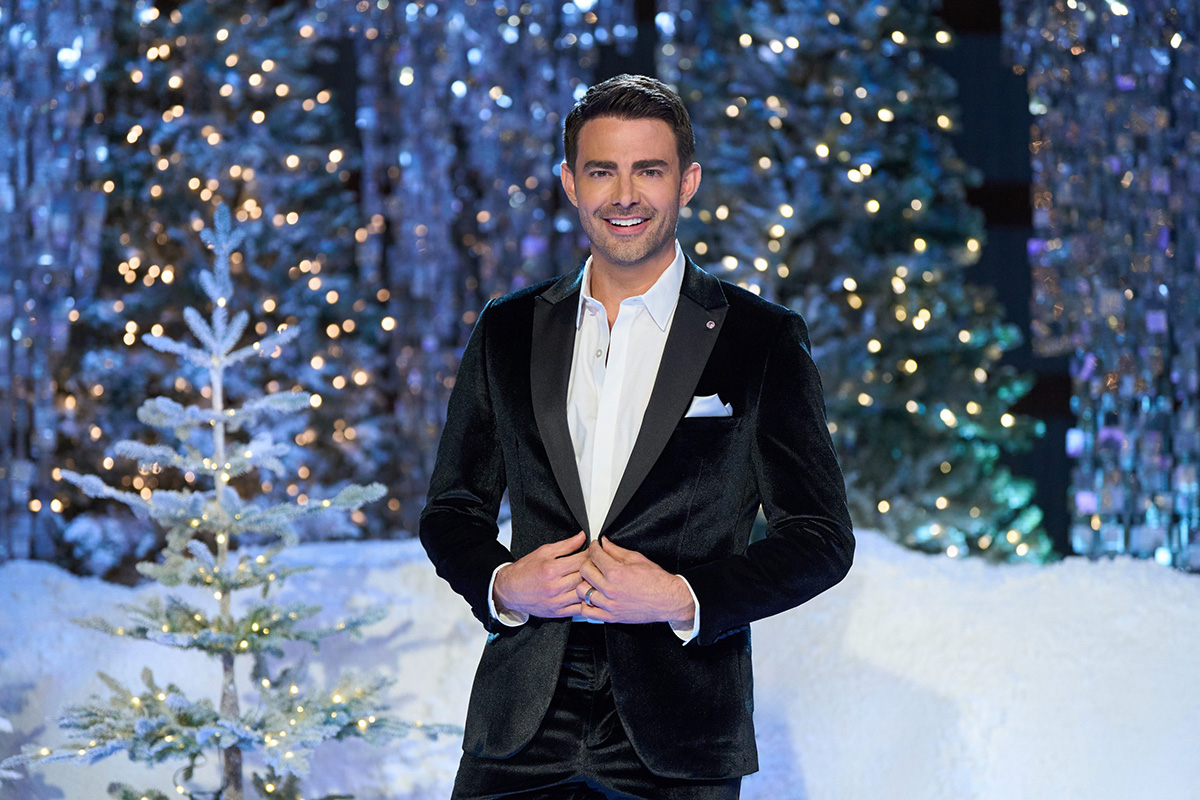
Jonathan Bennett believes there are two kinds of people in the world — those who love Hallmark movies and liars. And in Season 2 of Finding Mr. Christmas, which the Mean Girls star co-created with Ben Roy, Bennett is searching for Hallmark’s next leading man.
“It’s so fun for people because everyone in their life has someone they know that they think should be in Hallmark movies, right? The UPS driver, the barista at the coffee shop, the dentist,” Bennett says. “So we’re testing their acting abilities, we’re testing who they are, but we’re also looking for that star quality — the thing that makes them shine above everyone else. It’s almost something you can’t explain, but we know it when we see it.”
Season 2’s cast includes a former NFL player for the Green Bay Packers, a few actors, and a realtor. The 10 men compete in weekly festive-themed acting challenges, one of which included having to ride a horse and act out a scene with Alison Sweeney. The contestants were chosen from a crop of 360 potential men, and Bennett gives kudos to the show’s Emmy-nominated casting director, Lindsay Liles (The Bachelor, Bachelor in Paradise).
“She has a tough job because she has to find 10 guys that are going to be good reality television, but also have the talent to act, carry a scene, and lead a Hallmark movie eventually,” he says. To be the right fit for a Hallmark leading man, Bennett singles out five key characteristics: you have to be funny, charming, kind, have a sense of humor, and you have to do it all with a big heart.
Of course, Finding Mr. Christmas wouldn’t be Finding Mr. Christmas without its signature eye candy — something Bennett describes as “part of the job” for the contestants. “I can’t believe Hallmark let me get away with this. I dressed them as sexy reindeer and put them in harnesses attached to a cable 30 feet in the air, and they had to do a sexy reindeer photo shoot challenge,” he says with a laugh. “This season is just bigger and bolder than last. People are responding to not only all the craziness that we put them through, but also comparing and contrasting the guys in their acting scenes when we do them back-to-back.”
Season 1 winner Ezra Moreland’s career has been an early testament to the show’s success at finding rising talent. On seeing the show’s first winner flourish, Bennett says, “Now to watch him out in the world, just booking commercial after commercial and shining as an actor and a model, I think the show gave him the wings to do that. He learned so much about himself, and he took all that into his future auditions and casting. He just works nonstop. I’ve never seen an actor book more commercials and modeling gigs in my life.”
Bennett has been a star of plenty of Hallmark movies himself, including the GLAAD-award-winning The Groomsmen: Second Chances, which makes him a fitting host. Among those movies are 2020’s Christmas House, which featured the first same-sex kiss on the network and had a major impact on Bennett’s career as an openly gay man. “Hallmark’s been so great about supporting me in queer storytelling. But again, I don’t make gay movies for gay audiences. I make gay love stories for a broad audience, and that’s a huge difference, right? We’re not telling stories inside baseball that only the gay community will understand.”
He continues, “The backdrop of a Hallmark Christmas movie is very familiar to these people who watch. And so when you tell a gay love story, and you tell it no differently than a straight love story in that space, they’re able to understand. It’s able to change hearts and minds for people who might not have it in their lives.”
While Hallmark has become a major staple of Bennett’s career, he started off wanting to be a Broadway actor. And before the first season of Finding Mr. Christmas aired, Bennett took a break from TV to make his Broadway debut in Spamalot, replacing Michael Urie as Sir Robin and starring alongside Ethan Slater and Alex Brightman.
“That was my dream since I was five years old – then I booked a movie called Mean Girls, and everything kind of changes in your life. You no longer become a person pursuing Broadway, you become a part of pop culture,” Bennett recalls. “And to be honest, when I hit 40, I was like, ‘I’m probably never going to get to live that dream.’ And that’s okay, because I got to do other dreams and other things that were just as cool but different. So I honestly never thought it would happen.”
Bennett is still determined to make his way back on Broadway with the right role — he calls Spamalot the “best experience” of his life, after all — but he’s got another Hallmark show lined up with Murder Mystery House, which he co-created. The show was recently greenlit for development and intends to bring the Hallmark mystery movie to life. “It’s kind of like our version of The Traitors,” Bennett admits.
Looking back on both seasons, Bennett says that what makes Finding Mr. Christmas stand out in the overcrowded reality TV landscape is that everyone involved makes it with heart: “This isn’t a show where you’re going to watch people throw drinks in each other’s faces and get into big fights. The thing that has amazed me so much about this show, the more we’ve done it, is that every season, 10 guys come in as competitors, but they leave as a family and as brothers. That’s something you don’t get on any other network.”
Finding Mr. Christmas airs every Monday on Hallmark through December 20, with episodes available to stream on Hallmark+.
-

 The White House5 days ago
The White House5 days agoWhite House deadnames highest-ranking transgender official
-

 The White House5 days ago
The White House5 days agoAs house Democrats release Epstein photos, Garcia continues to demand DOJ transparency
-

 Opinions5 days ago
Opinions5 days agoReflecting on six years on the CAMP Rehoboth board
-

 Calendar5 days ago
Calendar5 days agoCalendar: December 12-18





